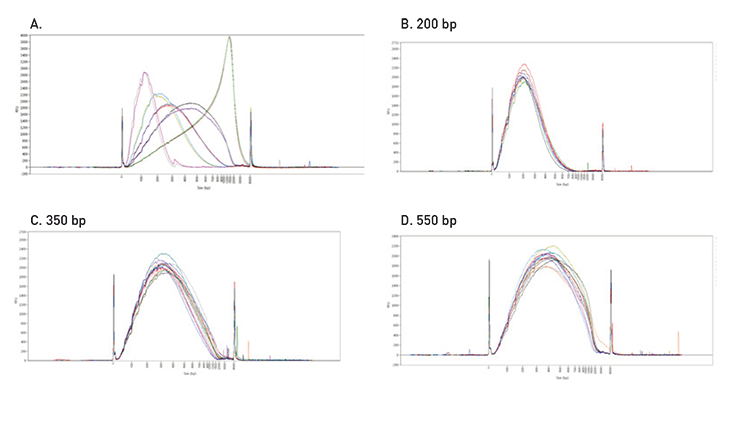
Figure: Isothermal and homogeneous sample preparation with the Bioruptor. Left panels: Precise temperature control to maintain integrity in sample preparation. The single cycle valve and the 4°C water cooler deliver efficient cooling and reliable performance. Finite element analysis software modeling of temperature around the sample (upper panel). Sample temperature measured with Krystal MV64 thermocouple during sonication cycles (30’’/30’’ cycles) showing the perfect isothermal processing (lower panel). Right panels: Powerful and uniform processing of samples down to 5ul (12 samples) to large volumes of 20ml (3 samples). Bioruptor empowers optimal and reproducible chromatin shearing while preserving high protein integrity (upper panel). Bioruptor’s most advanced ultrasound transmitter and water bath design ensure equal energy distribution. Cavitation energy, expressed as % of the maximum level, is measured with PPB Ultrasonic/Megasonic energy meter (lower panel).
What are the effects of ultrasound on biological samples?
High powered ultrasound waves can produce gaseous cavitation in liquids. Cavitation is the formation of small bubbles of dissolved gases or vapors due to the alteration of pressure in liquids. These bubbles are capable of resonance vibration and produce vigorous eddying or microstreaming. This mechanical stress has multiple effects on biological samples including; effective chromatin shearing, DNA & RNA shearing, cell lysis and tissue homogenization. When using a probe sonicator, the microstreaming phenomenon is limited to the vicinity of the probe which can generate high amounts of heat and release metal fragments. In contrast, the Bioruptor sonication bath is equally exposed to ultrasound energy allowing for the dissipation of heat and providing uniform absorption of energy. How does it work? Ultrasonic waves generated by the transducer produce longitudinal vibrations (alternating compression and rarefactions) in the water bath (see figure below). These pressure fluctuations create millions of microscopic bubbles (cavities) caused by the negative pressures generated by the rarefaction stage. As the cavities are exposed to the positive pressures, produced by the compression stage, they oscillate and expand to an unstable size (up to 100 microns diameter). Finally the cavities will implode generating pressure extremes and temperatures at the implosion sites. In addition, shock waves and eddies radiate outwardly from the site of cavity collapse. The localized hot spots that last for microseconds can have temperatures of ~5,000ºC, pressures of ~500 atmospheres as well as heating and cooling rates >109 K/s. The cumulative energy generated by this cavitation phenomenon is extremely high and produces intense shearing forces (Figure 1).

Figure 1: Presentation of bubble size in function of time during sonication process.
Bioruptor is the most popular brand in the Epigenetic and Next-Generation Sequencing communities with more than 2000 citations in peer-reviewed journals. Our instruments provide processing performance and recovery unmatched by any other sample preparation methodology. Bioruptor high intensity emission of ultrasounds creating cavitation is ideal for Epigenetics studies of chromatin and DNA methylation, Next-Generation Sequencing, protein analysis and much more.
Diagenode's Bioruptor simultaneously shears multiple samples in sealed tubes of 0.1 ml to 50 ml capacity quickly and accurately, providing optimal fragment lengths. The Bioruptor exhibits a laboratory friendly format as it is easily programmable and capable of processing multiple sample tubes, with parallel processing of 3-12 samples. The instrument is able to sonicate different sample volumes to achieve different fragment size ranges. The closed tube format prevents the sample from cross-contamination and aerosol formation.























